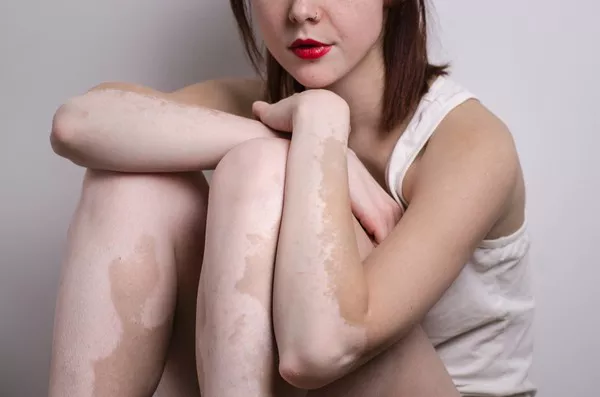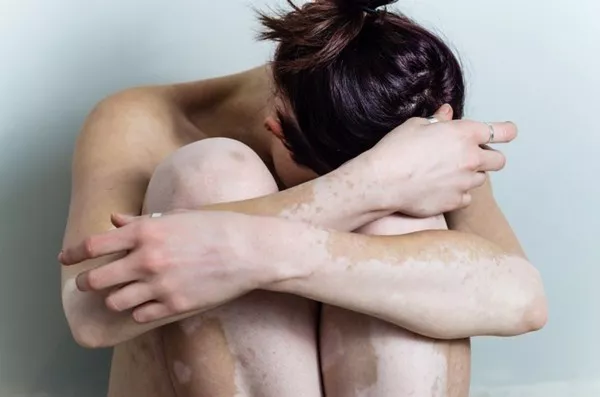Vitiligo is a skin condition that causes loss of pigment, leading to white patches on the skin. Many people wonder if every white patch they see on their skin is vitiligo. In this article, we will explore vitiligo, its causes, symptoms, and other conditions that may cause white patches. We will also discuss how to differentiate between vitiligo and other skin issues.
What is Vitiligo?
Vitiligo is an autoimmune disorder that affects the skin’s pigment cells, known as melanocytes. These cells produce melanin, the pigment responsible for skin color. When melanocytes are destroyed or stop functioning, white patches appear on the skin.
Types of Vitiligo
There are two main types of vitiligo:
Non-segmental vitiligo: This is the most common type. It affects both sides of the body and often begins on the face, hands, or around body openings.
Segmental vitiligo: This type is less common and usually affects one side of the body. It tends to occur in younger individuals and progresses more quickly than non-segmental vitiligo.
Causes of Vitiligo
The exact cause of vitiligo is not fully understood, but several factors may contribute:
Autoimmune response: The body’s immune system may mistakenly attack melanocytes.
Genetics: A family history of vitiligo or other autoimmune diseases increases the risk.
Environmental factors: Sunburn, exposure to certain chemicals, or skin trauma can trigger vitiligo.
Hormonal changes: Some people experience changes during puberty or pregnancy.
Symptoms of Vitiligo
The primary symptom of vitiligo is the appearance of white patches on the skin. These patches can vary in size and can occur anywhere on the body, including the face, hands, arms, and genitals.
Other Symptoms
Changes in hair color: Hair on the scalp, eyebrows, or eyelashes may turn white or gray.
Sensitivity to sun: Affected skin is more susceptible to sunburn.
Rubbing or trauma: Some people notice the patches after skin trauma, such as cuts or burns.
Is Every White Patch Vitiligo?
No, not every white patch is vitiligo. Several other conditions can cause white patches on the skin. Here are some common ones:
1. Tinea Versicolor
Tinea versicolor is a fungal infection that affects the skin’s pigmentation. It causes small, discolored patches, which can be lighter or darker than the surrounding skin.
Symptoms
- Scaly patches that may be white, pink, or brown.
- Patches often appear on the chest, back, and arms.
- The affected areas may become more noticeable after sun exposure.
2. Pityriasis Alba
Pityriasis alba is a common skin condition, especially in children and young adults. It presents as light-colored patches on the face and arms.
Symptoms
- Pale patches with a fine scale.
- Patches are usually not itchy.
- They may fade over time and typically do not require treatment.
3. Psoriasis
Psoriasis is a chronic autoimmune condition that causes red, scaly patches on the skin. In some cases, the patches can be lighter than the surrounding skin.
Symptoms
- Red patches covered with thick, silvery scales.
- Itching or discomfort.
- Commonly appears on elbows, knees, scalp, and lower back.
4. Eczema
Eczema, or atopic dermatitis, is a chronic skin condition that leads to inflamed, itchy skin. In some cases, eczema can cause light-colored patches.
Symptoms
- Red, inflamed skin that can become scaly or crusty.
- Intense itching.
- Common in flexural areas like elbows and knees.
5. Leukoderma
Leukoderma is a general term for skin that has lost pigment. It can be caused by several factors, including chemical exposure, skin injuries, or certain diseases.
Symptoms
- White patches that may appear anywhere on the body.
- Patches may develop gradually over time.
How to Differentiate Vitiligo from Other Conditions
1. Pattern of White Patches
Vitiligo: Often symmetrical, affecting both sides of the body.
Other conditions: Patches may be asymmetrical or localized.
2. Itchiness and Discomfort
Vitiligo: Typically, there is no itching or discomfort.
Other conditions: Conditions like eczema or psoriasis are usually itchy and may cause discomfort.
3. Skin Texture Changes
Vitiligo: The skin remains smooth.
Other conditions: Fungal infections like tinea versicolor or psoriasis may cause scaly or rough patches.
4. Family History
Vitiligo: May have a family history of autoimmune diseases.
Other conditions: Conditions like tinea versicolor are not typically linked to family history.
Diagnosing Vitiligo
If you suspect you have vitiligo or any other skin condition, it is essential to consult a dermatologist. They will conduct a thorough examination and may perform tests, such as:
Wood’s lamp examination: A special light that helps visualize pigment loss.
Skin biopsy: A small sample of skin may be taken to confirm the diagnosis.
Treatment Options for Vitiligo
While there is no cure for vitiligo, several treatments can help manage the condition:
1. Topical Treatments
Corticosteroids: Creams that can help restore color in some patients.
Calcineurin inhibitors: Non-steroidal creams that may reduce inflammation and promote repigmentation.
2. Phototherapy
UVB phototherapy: Exposure to ultraviolet light can stimulate melanocyte activity.
PUVA therapy: A combination of a medication and light treatment to help repigment the skin.
3. Skin Camouflage
Using makeup or skin dyes can help conceal white patches and improve appearance.
4. Surgical Options
In some cases, skin grafting or melanocyte transplantation may be considered.
Living with Vitiligo
Living with vitiligo can be challenging, both physically and emotionally. It is essential to practice good skincare and protect your skin from the sun. Here are some tips:
Sunscreen: Use a broad-spectrum sunscreen to protect vulnerable skin.
Hydration: Keep your skin moisturized to prevent dryness.
Support: Seek support from friends, family, or support groups to cope with emotional challenges.
Conclusion
Not every white patch on the skin is vitiligo. Various conditions can cause white patches, and it is crucial to consult a dermatologist for an accurate diagnosis. Understanding the differences between vitiligo and other skin issues can help in seeking appropriate treatment and managing the condition effectively. If you notice any changes in your skin, do not hesitate to seek professional advice. Early intervention can lead to better outcomes and improved skin health.
Related topics:
























